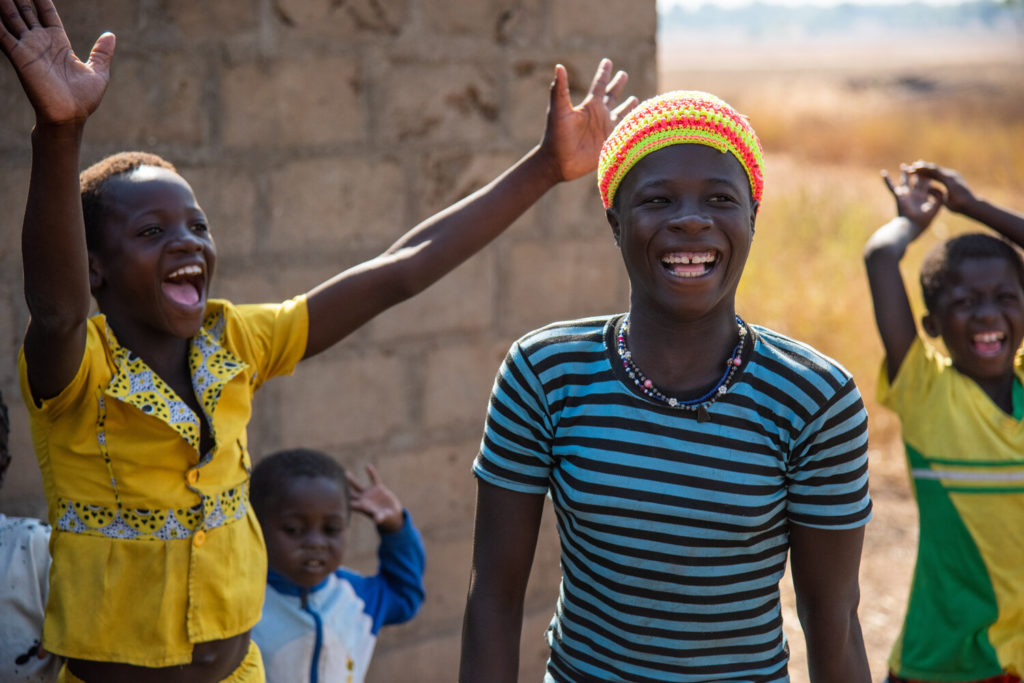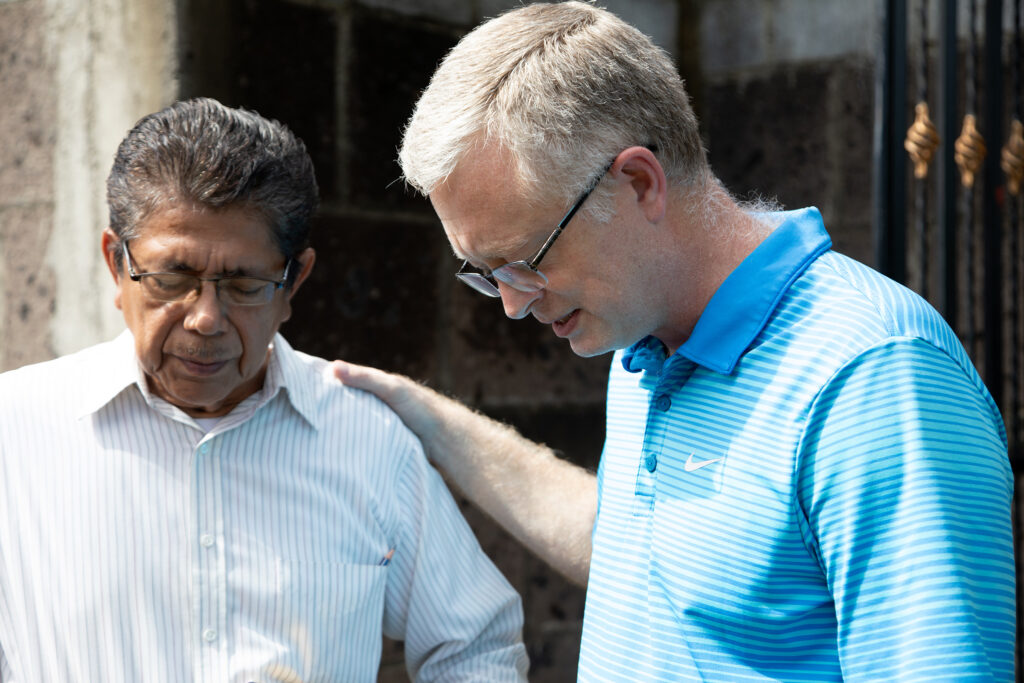As I have traveled to various countries and cultures, I have gained a new understanding of what “church” is. But still, when asked to define it, my mind is quickly filled with images of neatly arranged chairs in an air-conditioned building with carpeted interiors, neutral walls, and a stone façade somewhere. Pictures of Jesus or images of biblical accounts dot the walls. There is a sanctuary, separate from the kid’s wing and the youth hall, and a platform with musical instruments and lights. I envision people wearing their “Sunday best”—suits and dresses, mostly—or for others, jeans and a nice top.
But since living in Africa for four months, I have also visited some different churches. These churches vary not only from Western churches but from each other.
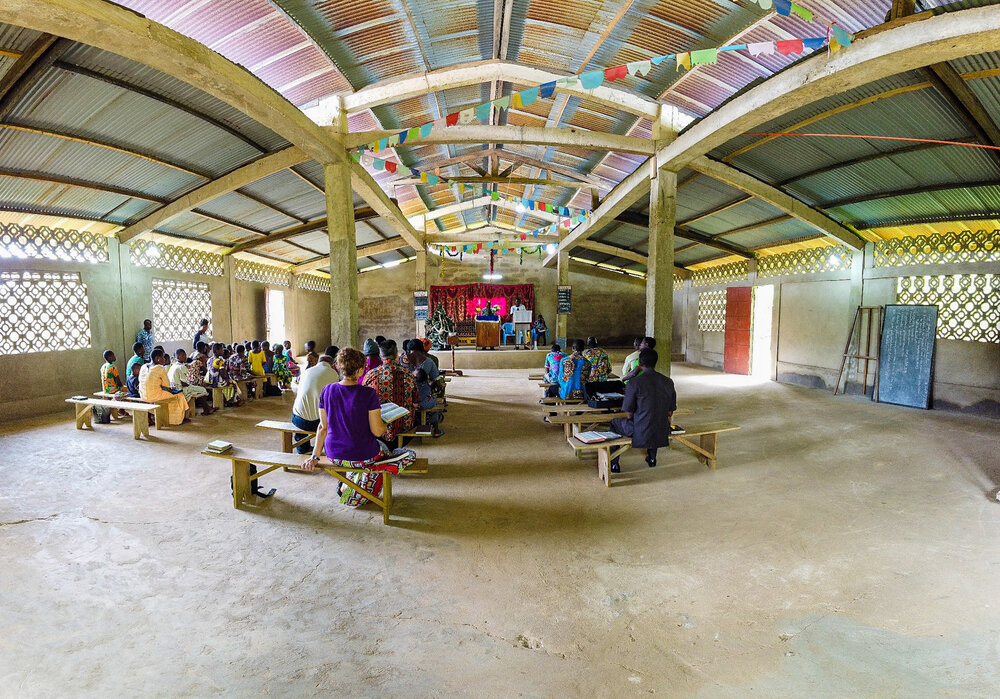
Some churches have buildings. They are usually concrete with large metal doors and aerated block walls which allow in both light and air. They may have some bare bulbs hanging from the exposed roof trusses. The walls are typically decorated with fabrics or ribbons to add some color. The seats are hard, unpadded, wooden benches or plastic lawn chairs. Usually the man delivering the sermon stands behind a podium of some sort, made of glass or wood, and speaks to the congregation. The style of dress is distinctly African, with bright and colorful fabrics—the women in skirts or dresses and the men typically in an outfit of matching shirt and pants. Occasionally you’ll see a Western-style suit.
The men sit on one side, the women on another, and the children often have their own section as well (although the smallest ones still sit with mom). Some instruments may be played, ranging from bead-covered gourds to trumpets and trombones. There are often drums. Choirs sing and clap. The offering is taken with a handled bag, or in a processional to the front where a box sits—usually involving dancing as a choir sings.
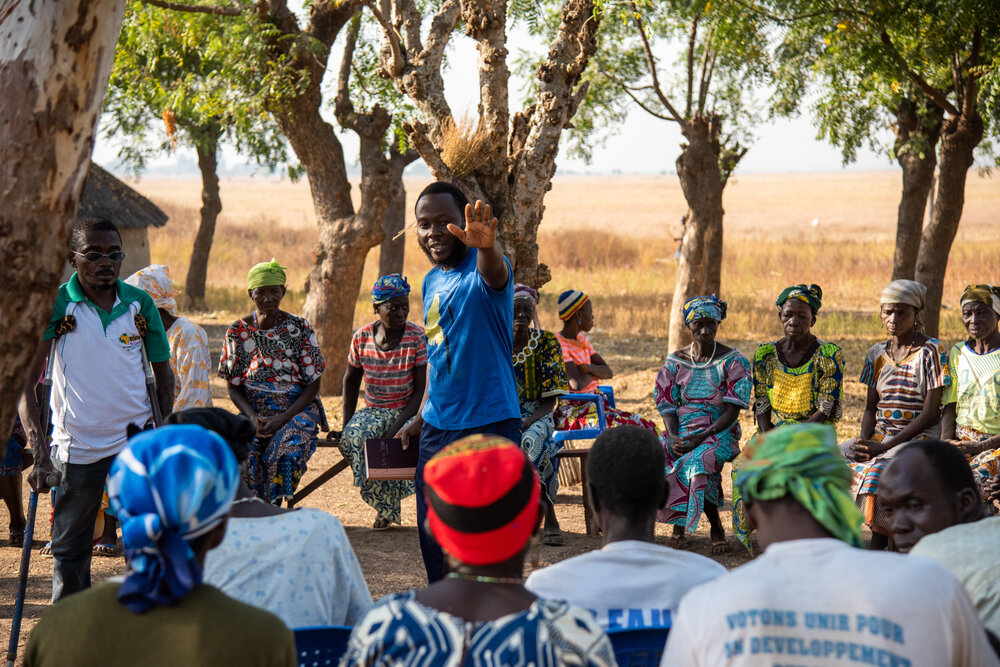
There is not much space between the church property and the road, so one can usually hear the din of the traffic during the sermon, along with the sound of conversations happening outside the open doors often. Sermons are usually preached in a local language and translated into French (if white people are present). Many churches’ sound systems are not set to proper volumes, so feedback, static, and clipping are common.
Village churches, on the other hand, likely do not have buildings. Instead, the women carry long, wooden benches on their heads to a large tree, which provides the most shade from the scorching sun. Older children carry or walk with their younger siblings to a clean mat laid on the ground, where they remove their shoes to sit down. Other brings a lesson and activities for the children, usually delivered in French and translated to another language if a missionary is present.

The adults gather around in circles or half-circles to hear the preacher. There may or may not be traditional instruments. Some villages use just their voices and hands to make music. Some village may use song books, but many simply sing songs they have made on their own that sound much like the psalms. They praise God for his goodness and blessings of their harvest, health, and homes. The offering may be a time when a bowl is placed in the middle of a circle and the people unwrap coins from their scrap fabric wallets and dance joyfully to the center, placing what God has given them to give back inside.
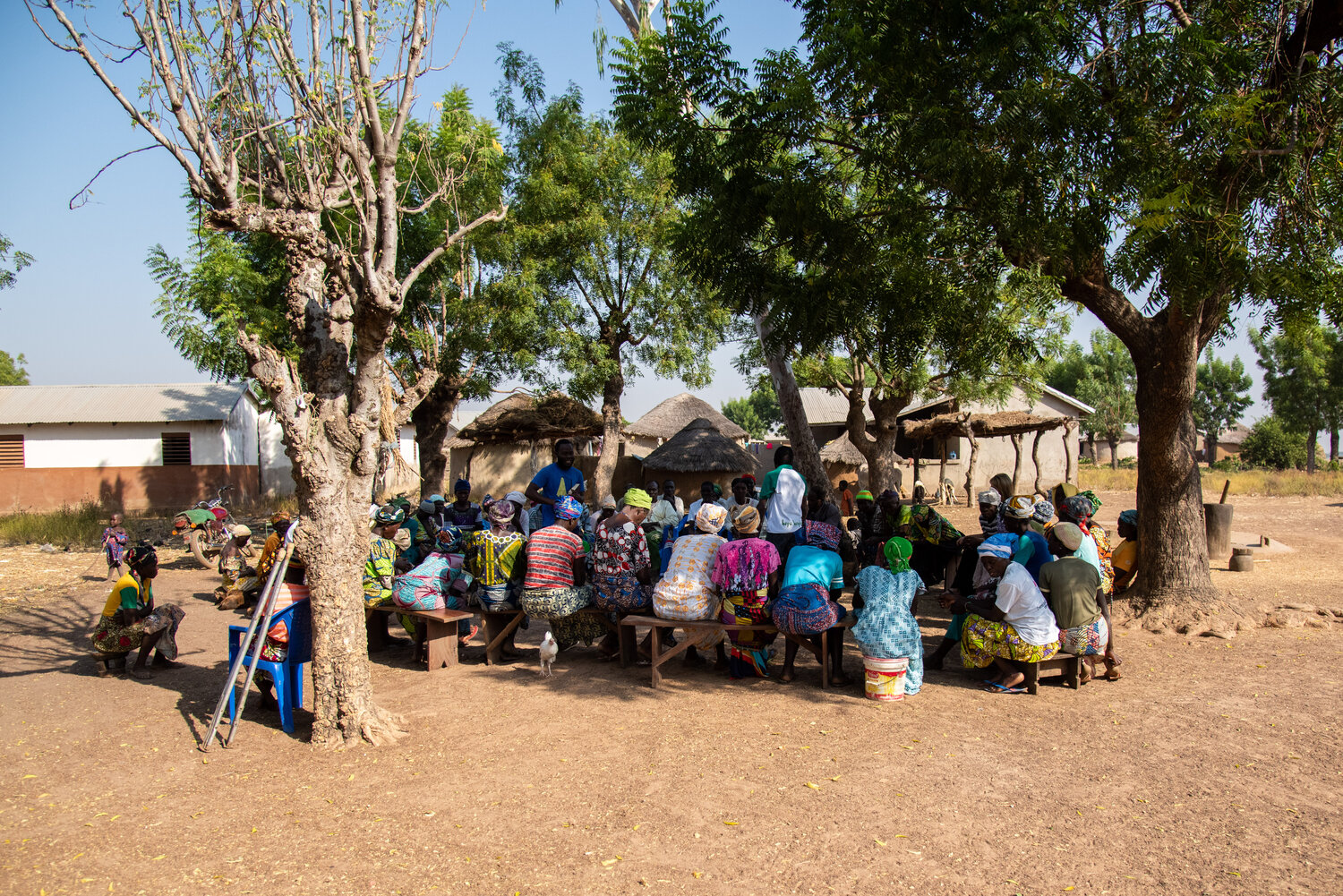
A village church service may be interrupted by the sound of moto or bicycle traffic. Many folks may walk by on their way home from getting water or on their way to sell goods. Chickens, sheep, goats, cows, and dogs roam freely about. The animal sounds permeate the singing and preaching. Fussier children are walked by their siblings to their moms because they have had enough of trying to comfort, console, and quiet the child. The service starts when the people arrive and finishes when the preacher is done. A few people may come and go midway through.

Why share all this?
We often speak of how “church” is not a building but a body of believers. Yet, most often, our mental image of church involves Western buildings and traditions of our own.
What does your “church”—the place itself—look like? For me, it sometimes looks like this.
